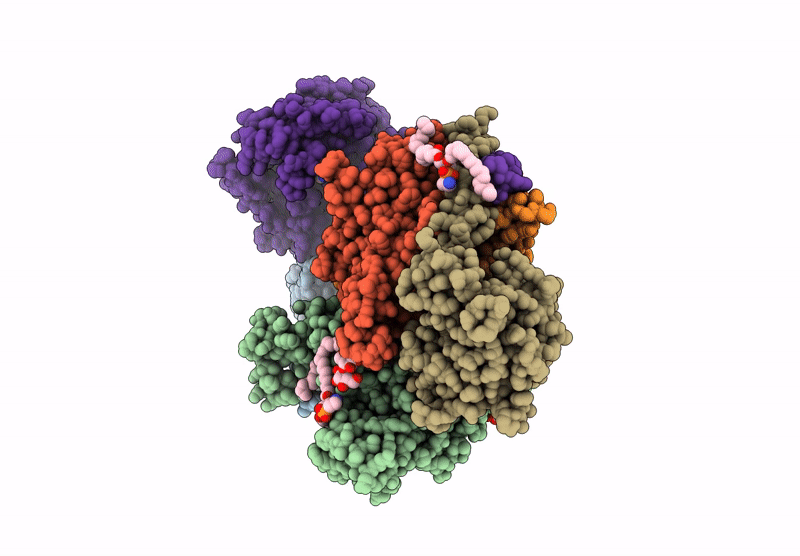Abstact
Na+-translocating NADH-ubiquinone oxidoreductase (Na+-NQR) is a unique redox-driven Na+-pump. Since this enzyme is exclusively found in prokaryotes, including the human pathogens Vibrio cholerae and Neisseria gonorrhoeae, it is a promising target for highly selective antibiotics. Korormicin A, a natural product, and a specific and potent inhibitor of V. cholerae Na+-NQR, may become a lead compound for the relevant drug design. We previously showed that the G141A mutation in the NqrB subunit (NqrB-G141A) confers moderate resistance to korormicin A (about 100-fold). However, the efficiency of photoaffinity labeling of the mutant enzyme by a photoreactive korormicin derivative was the same as in the wild-type enzyme. Because of these apparently conflicting results, the molecular mechanism underlying the korormicin A-resistance remains elusive. In the present study, we determined the cryo-EM structure of the V. cholerae NqrB-G141A mutant in the presence of bound korormicin A, and compared it to the corresponding structure from the wild-type enzyme. The toxophoric moiety of korormicin A binds to the mutant enzyme similarly to how it binds to the wild type. However, the added bulk of the alanine-141 excludes the alkyl side chain from the binding cavity, resulting in a decrease in the binding affinity. In fact, isothermal titration calorimetry revealed that the binding affinity of korormicin to the NqrB-G141A mutant is significantly weaker compared to the wild-type. Altogether, we conclude that the inhibitory potency of korormicin A is weaker in the NqrB-G141A mutant due to the decrease in its binding affinity to the altered binding cavity.



